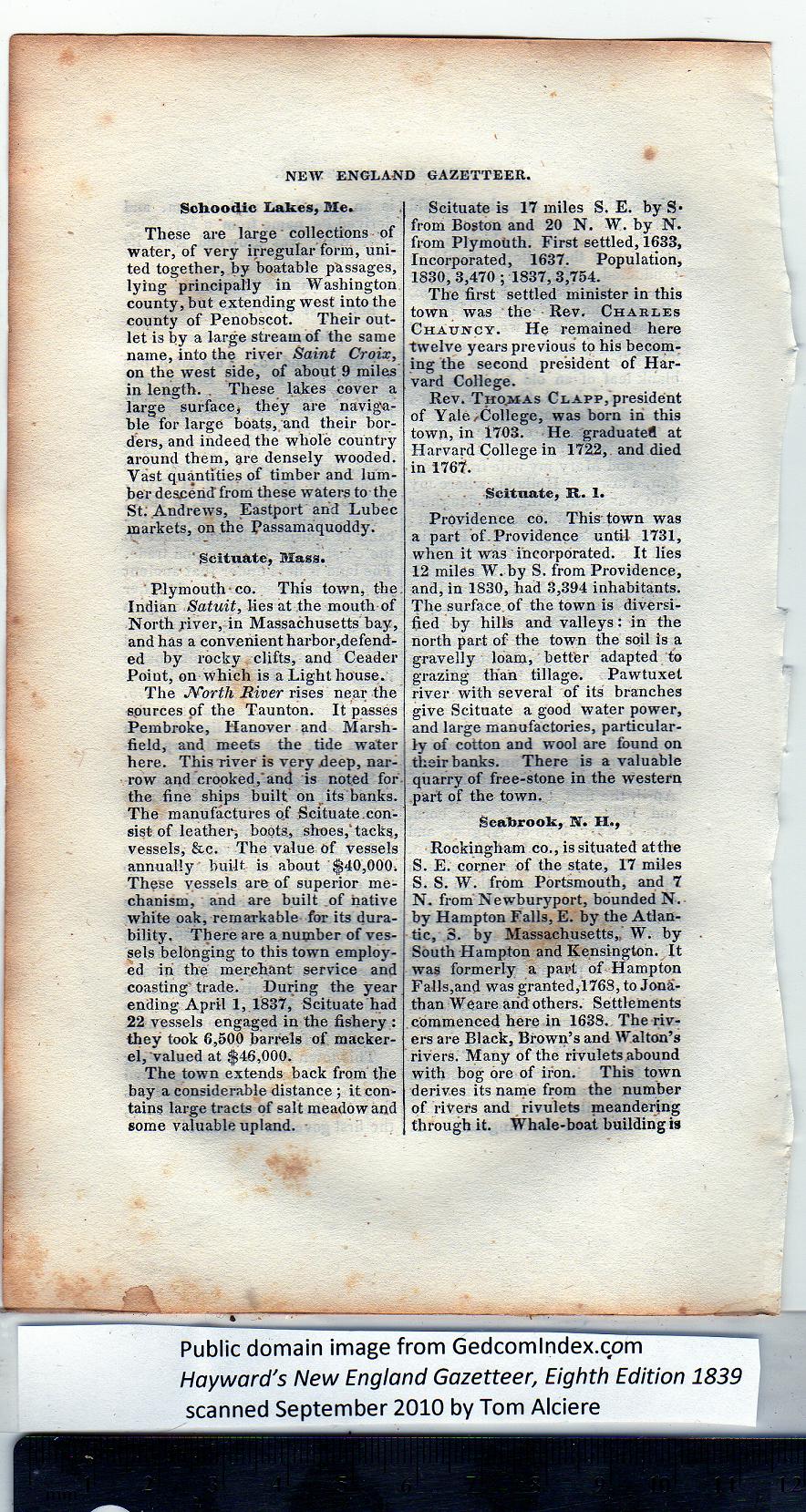|
Schoodic Lakes, Me.
These are large collections of
water, of very irregular form, uni-
ted together, by boatable passages,
lying principally in Washington
county, but extending west into the
county of Penobscot. Their out-
let is by a large stream of the same
name, into the river Saint Croix,
on the west side, of about 9 miles
in length. . These lakes cover a
large surface, they are naviga-
ble for large boats, and their bor-
ders, and indeed the whole country
around them, are densely wooded.
Vast quantities of timber and lum-
ber descend from these waters to* the
St. Andrews, Eastport and Lubec
markets, on the Passamaquoddy.
' Scituate, Mass.
Plymouth-co. This town, the.
Indian Satuit, lies at the mouth of
North river, in Massachusetts bay,
and has a convenient harbor,defend-
ed by rocky clifts, and Ceader
Point, on which is a Light bouse.
The .Worth River rises near the
sources of the Taunton. It passes
Pembroke, Hanover and Marsh-
field, and meets the tide water
here. This river is very deep, nar-
row and crooked,'and is noted for
the fine ships built on its banks.
The manufactures of Scituate.con-
sist- of leather, boots, shoes,1 tacks,
vessels, &c. The value of vessels
annually built is about $40,000^
These vessels are of superior me-
chanism, and are built of native
white oak, remarkable for its dura-
bility. There are a number of ves-
sels belonging to this town employ-
ed in the merchant service and
coasting'trade. During the year
ending April 1, 1837, Scituate had
22 vessels engaged in the fishery :
they took 6,500 barrels of macker-
el, valued at $46,000.
The town extends back from the
bay a considerable distance; it con-
tains large tracts of salt meadow and
some valuable upland. |
Scituate is 17 miles S. E. by S-
from Boston and 20 N. W. by N.
from Plymouth. First settled, 1633,
Incorporated, 1637. Population,
1830, 3,470 ; 1837, 3,754.
The first settled minister in this
town was the Rev. Charles
Chauncy. He remained here
twelve years previous to his becom-
ing the second president of Har-
vard College.
Rev. Tho.mas Clapp, president
of Yale ✓College, was born in this
town, in 1703. He graduated at
Harvard College in 1722, and died
in 1767.
Scituate, R. 1.
Providence co. This-town was
a part of Providence until 1731,
when it was incorporated. It lies
12 miles W. by S. from Providence,
and, in 1830, had 3,394 inhabitants.
The surface of the town is diversi-
fied by hills and valleys: in the
north part of the town the soil is a
gravelly loam, better adapted to
grazing than tillage. Pawtuxet
river with several of its branches
give Scituate a good water power,
and large manufactories, particular-
ly of cotton and wool are found on
their banks. There is a valuable
quarry of free-stone in the western
part of the town.
Seabrook, ST. H.,
Rockingham co., is situated at the
S. E. corner of the state, 17 miles
S. S. W. from Portsmouth, and 7
N. from Newburyport, bounded N.
by Hampton Falls, E. by the Atlan-
tic, S. by Massachusetts,, W. by
South Hampton and Kensington. It
was formerly a part of Hampton
Falls,and was granted,1768, to Jona-
than Weare arid others. Settlements
commenced here in 1638. The riv-
ers are Black, Brown’s and Walton’s
rivers. Many of the rivulets abound
with bog ore of iron. This town
derives its name from the number
of rivers and rivulets meandering
through it. Whale-boat building is |
